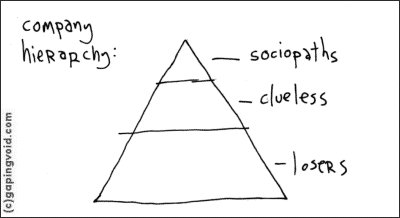
For many moons now I have been toiling away on Dancecult: Journal of Electronic Dance Music Culture as the incoming Managing Editor. Lo, this is volunteer labour, and a hearty dose it has been, from taking over the reins of our Open Access publishing platform, OJS—which is a cranky beast indeed—to completely upending the Dancecult StyleGuide (DSG) so that it conforms—well, almost conforms—to the Chicago Manual of Style 16th ed.. The kind of labour I perform is exemplary of the overeducated precariat: technical server administration; web production; design and layout production and direction; editing and copyediting; technical manual writing and production; human resources; workflow management; all-around tinkering & troubleshooting.
Here’s a slice into a typical Dancecult session—begin with double-espresso and/or late-night wine. Chat with Operations Assistant Neal Thomas as I edit PHP, tinker with TPL, use root SSH to get all CHMOD, manage a CPanel reinstall and transfer, setup MySQL databases and fix CSS, and do all manner of technical support for the Journal as we try to figure out how to upgrade this stubborn beast. At the same time, I am engaged in an email storm with Executive Editor Graham St John and the Copyeditors as we overhaul the DSG, where I act as a a senior copyeditor and the last pair of eyes for every single piece of text you see published. As my mind approaches meltdown, I run next door and meet with Art Director Cato Pulleyblank. We are transferring over the existing workflow to Adobe InDesign, redesigning the entire publication layout, from fonts to margins, styles to protocols, in the process. Cato redesigns Dancecult’s logo with Graham and I’s input, drawing up visual conventions for web promotions and style protocols, throwing down hours of pro bono in the process. And that is still not all. To get this beast underway, I check in with the Production Team, which has been assembled from a call for precarious labour. I check in on Director Gary Botts Powell to see how our new Production Assistants (Luis-Manuel Garcia, Ed Montano and Botond Vitos) are doing with the HTML conversions. From their feedback I improve the HTML production guide which I have writ to explain the rather complex process involved in converting Word’s garble to appropriate XHTML (Transitional, of course). Meanwhile I carry out all of the Journal’s InDesign layout for PDF production, and draw up a Guide for that too—though I doubt anyone else will be touching it for awhile, due to the complexity and attention to detail involved. As the midnight hour flips over into morning, I edit and fix all HTML returned from the newly-minted production crew. Eventually, after a few weeks of such routines, I publish it all on OJS and fix all the broken things. Graham and I celebrate over Skype. It is early afternoon for him, and a late night for me. We virtually clink the beers.
Now that would sound like a lot of self-aggrandizing hype if it wasn’t for the fact that all of us involved do all this unpaid and yet—damn straight—produce an extraordinarily professional Journal. Meanwhile, I watch other academic funding agencies throw down bloatware cash to pay the poorly-trained to pump out some pitiful excuse for a research platform. I’m not sure what my point is here, though I am looking forward to seeing some capitalist renumeration for such a plethora of skillz. Bring on the meritocracy, I say.
* * *
DANCECULT | Journal of Electronic Dance Music Culture
==================
Volume 2 • Number 1 • 2011
==================
http://dj.dancecult.net/
Dancecult returns with two themes: the dystopian and remix aesthetics of Detroit and a special section on the Love Parade.
While you read, take a look around. Dancecult has taken a new step forward in the visualization of the Journal, with a complete redesign of our PDF publications and logo. It is also our first edition featuring the volunteer efforts of our Production and Copyediting Teams. Congratulations to all for their efforts.
Graham St John
Executive Editor
tobias c. van Veen
Managing Editor
## Feature Articles ##
Disco’s Revenge: House Music’s Nomadic Memory
— Hillegonda C. Rietveld
Hooked on an Affect: Detroit Techno and Dystopian Digital Culture
— Richard Pope
Maintaining “Synk” in Detroit: Two Case Studies in the Remix Aesthetic
— Carleton S. Gholz
Festival Fever and International DJs: The Changing Shape of DJ Culture in Sydney’s Commercial Electronic Dance Music Scene
— Ed Montano
## From the Floor ##
Nomads in Sound vol. 1
— Anna Gavanas
# Special Section on the Love Parade #
Where is Duisburg? An LP Postscript HTML
— Sean Nye, Ronald Hitzler
Party, Love and Profit: The Rhythms of the Love Parade (Interview with Wolfgang Sterneck)
— Graham St John
Pathological Crowds: Affect and Danger in Responses to the Love Parade Disaster at Duisburg
— Luis-Manuel Garcia
## Reviews ##
Hip Hop Underground: The Integrity and Ethics of Racial Identification (Anthony Kwame Harrison) PDF
— Rebecca Bodenheimer
The Local Scenes and Global Culture of Psytrance (Graham St John)
— Rupert Till
Pink Noises: Women on Electronic Music and Sound (Tara Rodgers)
— Anna Gavanas
Technomad: Global Raving Countercultures (Graham St John)
— Philip Ronald Kirby
Sonic Warfare: Sound, Affect, and the Ecology of Fear (Steve Goodman)
— tobias c. van Veen
Music World: Donk (Dir. Andy Capper)
— Philip Ronald Kirby
Speaking in Code (Dir. Amy Grill)
— tobias c. van Veen
===========
DANCECULT 2 (1)
http://dj.dancecult.net
===========













 RT
RT 